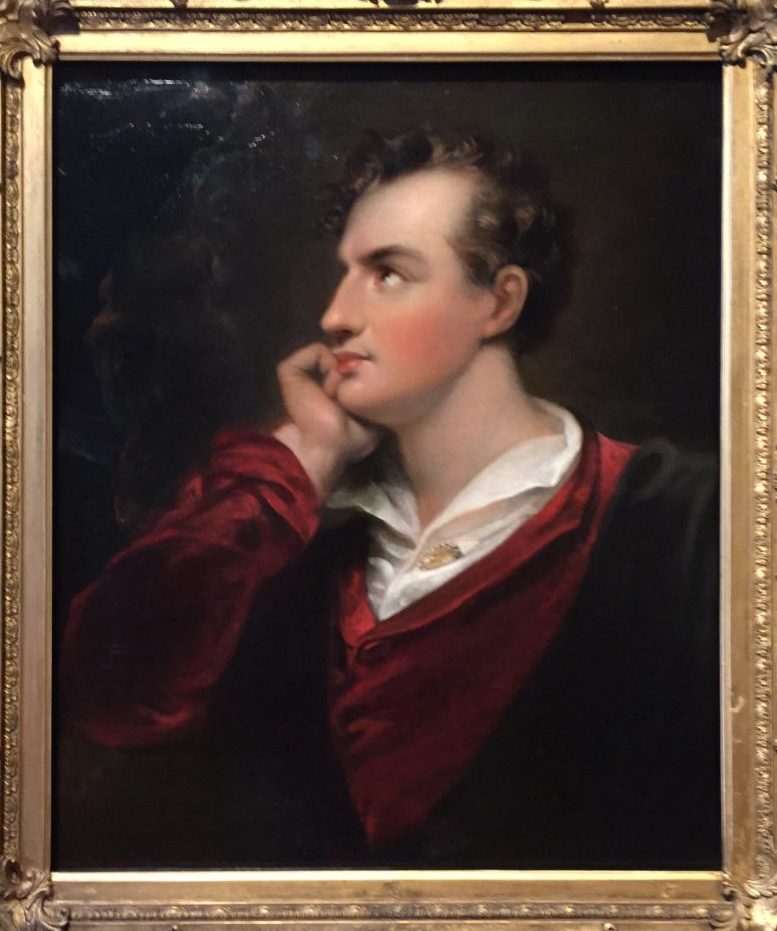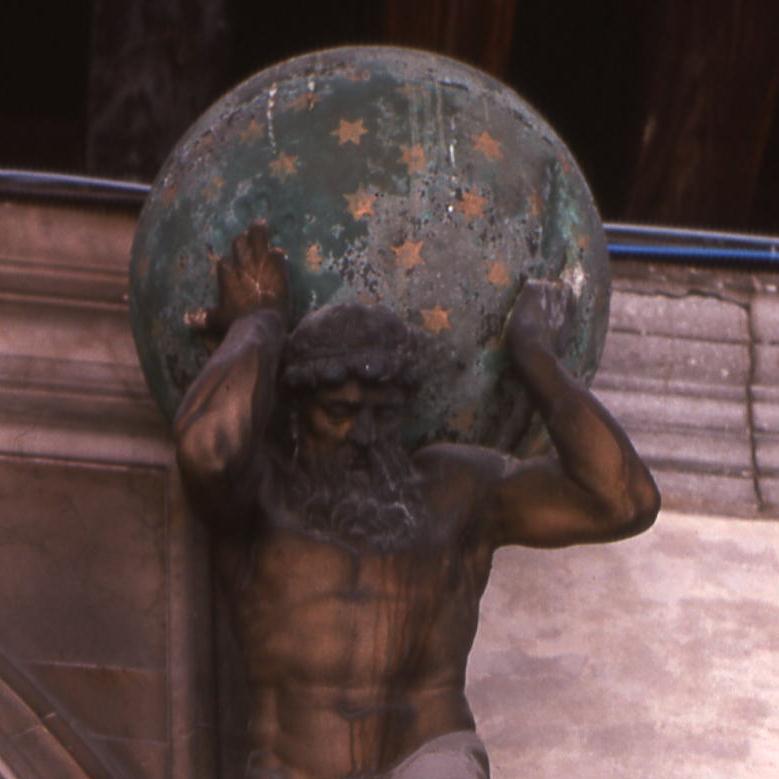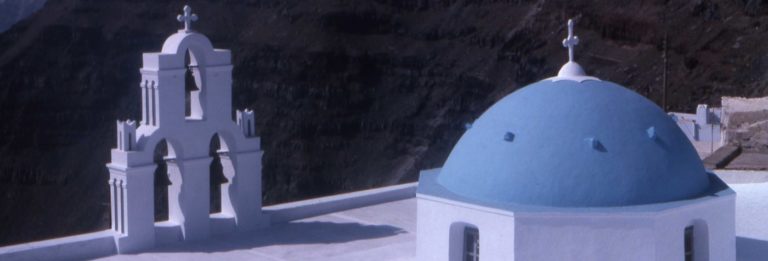
Venice is a great city, even for those returning for a second or third time. With no cars, it is the ultimate walking city. Built on islands in a swampy bay, the city is surrounded by and interlaced with water. See A History of Venice.
While Pisa has one famous leaning bell tower, Venice has about a hundred! When your ship sails out, be sure to be up on the port (left) side of the top deck for great city vistas and an excellent view into St. Mark’s Square.
Venice was lucky to experience something extremely rare in European history: four hundred years of relative peace and prosperity. During this time, its shipping companies and bankers functioned as one of the primary European gateways for the trade of the famous Silk Road. See City of Fortune: How Venice Ruled the Seas.
Everything flowed from the Orient and the Middle East through Venice. As the wealth increased, so did the Venetian taste for the fast life! In spite of the guilt-laden teachings of St. Francis of Assisi, Venice evolved into the Las Vegas of its day. Celebrations and processions occurred for every occasion. Intrigues, both political and amorous, were the mode of the day. Women carried small arms to “adjudicate” their “affairs”.

This was the time of Casanova, who describes his dalliances in History of My Life, Vols. 1-2. Lord Byron had his own lascivious adventures in Lord Byron: The Major Works (Oxford World’s Classics)
. One of Lord Byron’s most famous poems is “Don Juan”, said to be patterned after Casanova. Check out the opera, Don Giovanni
.
And that’s when Venetians took to wearing masks. You never knew who was sitting across the gaming table from you, or, indeed, whom you might be embracing! The masks have become an art form of their own and are available in varying degrees of sophistication in the gift shops throughout the city.
Many of you will note the thematic tie with Andrew Lloyd Webber’s The Phantom of the Opera (Original 1986 London Cast), whose second act opens with a splendid Venetian “Masquerade”, which is spoiled when the Opera Ghost appears to deliver his masterpiece, “Don Juan Triumphant.”
The heart of it all is St. Mark’s Square, where you will find St. Mark’s Cathedral, the Doge’s Palace, a bazillion pigeons, and the most expensive sidewalk cafes in Europe. (Have a drink anyway, while the bands play, and be sure someone takes your picture.) Gondoliers and great vistas are found by the waterfront. Napoleon referred to this square as “the drawing room of Europe.”

The cathedral is remarkable and unlike any northern European cathedral you have ever seen, (ie. Westminster, Notre Dame, Chartres, etc.). (See The Architectural History of Venice: Revised and enlarged edition)
Stunning marble, covered with statuary, and crowned with ornamental domes belying the Persian influence of its architecture. (This is the westernmost extent of this Persian influence, contrasted with the famous dome of the Taj Mahal, in India, the archetype of Persian architecture.)
Inside, the entire ceiling above the first story is covered with gold mosaics of biblical figures, stories, allegories, and lessons. The effect is astonishing. You can find some imagery on the Internet, though we did not identify any good books.
Atop the entrance to the cathedral are replicas, (the originals are inside in the church museum), of the four horses of the Quadriga. Carved in Ancient Greece at the time of Alexander the Great, (circa 325 BC), the team is as well traveled as most cruisers! They were taken to Rome by Nero, Istanbul by Constantine (Constantinople), Venice by crusaders, Paris by Napoleon, and finally back to Venice.

The Doge’s Palace, (shown above with one of the Doge’s kneeling before the mascot of the city, St. Mark’s evangelical lion), is home to some of the best artwork in Venice. Venice. The Doge’s Palace. “Doge” basically means “Duke” or ruler. Being a Doge had its drawbacks. It was an elected office for life, requiring complete dedication to the State. This was something done by widower elders, as a last stint of community service. The Palace has an incredible collection of the painting and sculpture of Venice, though much of the original stuff was lost in a fire in the late 1400’s. It’s all been replaced with more masterpieces.
The artwork of Venice centers around four primary artists, Titian, Tintoretto, Veronese, and Bassano. Titian was a true Renaissance artist influenced by da Vinci and Michelangelo. His paintings show a human spirit with confidence and optimism, reflecting the power of the individual that was central to the Renaissance movement. Start with Titian and the Renaissance in Venice, or spring for Titian the Complete Paintings
.
By the time Tintoretto arrived, the Catholic Church was reasserting its dominance of Europe, led by the Spanish Inquisition. Tintoretto’s masterpieces are darker, with humans far more deferential to ecclesiastical themes. His tour de Force is the collection of biblical artistry in the Sala Superiore in the Scuola Grande di San Rocco. This is not to be missed. You’ll also find his massive “Paradiso” in the Doge Palace. For starters, pick up Tintoretto: Tradition and Identity, Second Expanded Edition.

Veronese, (“the guy from Verona”), was a happier country lad, whose paintings have an exuberance of color and light that must have been a welcome relief from the heavier Tintoretto pictures. See Paolo Veronese: A Master and His Workshop in Renaissance Venice. Bassano, also a country boy, painted biblical and mythical stories with everyday Italian countryside landscapes and human figures. Pick up Titian, Tintoretto, Veronese: Rivals in Renaissance Venice
.

For the best artwork, make sure to visit the Doge’s Palace, the Accademia Museum, the Church of the Frari, and the Scuola Grande di San Rocco. The Frari church has Titian’s absolutely stunning altarpiece, “Assumption of Mary”.
Tintoretto’s massive “Paradise” is in the Doge’s Palace, while San Rocco’s is his tour de force, referred to as “Tintoretto’s Sistine Chapel”. You will be able to follow Old and New Testament images from beginning to end that would have made Ferdinand and Isabella proud.
It is actually possible to get away from the crowds in Venice. For a fun “off-the-beaten-path” adventure look up Santa Maria Dell’Orto, in the Cannaregio neighborhood. This was Tintoretto’s parish church. The walls around the alter apse are covered with soaring Tintoretto murals. He is also buried here. There will be no crowds.
Veterans who have already taken in the big sites may wish to stroll across the Grand Canal to the Peggy Guggenheim Modern Art Museum. It’s a great collection of early Twentieth Century art, with Picasso, Miro, Calder, Ernst, Chagall, etc.
For the religious pilgrim in you, make sure to visit Santa Maria dei Frari, (“Church of the Frari”). Unassuming brick on the outside, this has a stunning collection of art on the inside. It is the site of the urban ministry of St. Francis of Assisi. See Francis of Assisi: A New Biography. Coming out of the hills of Tuscany to spread his word about humility and simplicity, St. Francis set up shop in central Venice and clearly attracted the attention and guilty consciences of the wealthy Venetians. Aside from Titian’s altarpiece and tomb, you will also find Donatello’s original wooden “John the Baptist.” Learn about the Florentine Sculptor in Donatello (Masters of Italian Art)
.

The city walkways from St. Mark’s to Rialto Bridge are jammed with shops and souvenir stands. You’ll see the famous (and expensive) gondoliers all over this part of the city. For an extra stipend, you can have a singer join your gondola. Legend has it that the gondoliers were singing the famous aria, “La Donna e mobile” from Verdi’s <Verdi – Rigoletto / Sutherland, Pavarotti, Milnes, LSO, Bonynge before the final curtain had fallen on opening night in 1851. Get in a Venetian frame of mind with Verdi: Greatest Hits
.
Beyond these sites and experiences, Venice is a great city in which to stroll, arm-in-arm, (once you get away from the crowds), or to find a tucked away restaurant with engaging staff and recognizable food. (Virtually all menus have English explanations.) Buon appetito!






